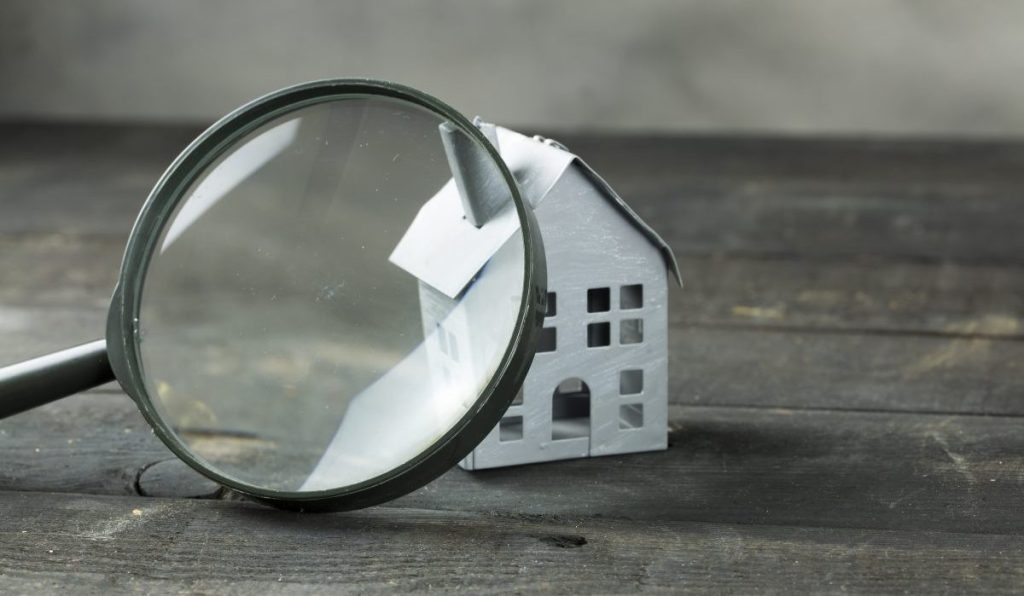HousingWire recently spoke with CoreLogic’s Chief Appraiser Shawn Telford about re-examining traditional appraisal workflows in light of the changes brought on by COVID-19.
HousingWire: What changes have appraisers had to make to their workflows in light of social distancing and other COVID-related concerns?
Shawn Telford: What has changed in many cases is how lenders are asking appraisers to form opinions of value. In most cases the in-person inspections required by GSEs, FHA and VA policies can continue per policy; however, adjustments to policy compliance are often needed to get the loan underwritten. Appraisers are adapting by utilizing temporary flexibilities put in place by the GSEs, FHA and VA lenders.

Like all of us, appraisers are coping with uncertainty and do not want to put themselves, their families or those they interact with in any jeopardy. Being sensitive to and accommodating diverse opinions and preferences from borrowers regarding COVID-19 is now business as usual.
When inspections are safe and feasible, appraisers are wearing personal protective equipment (PPE) such as masks, gloves and shoe coverings. When inspection flexibilities are not available, appraisers find creative approaches to minimize contact during an inspection, like having the borrower open all the doors, turn on all the lights and wait outside while the inspection takes place.
When flexibilities are needed, changes to the assignment conditions related to inspection are made based on secondary market guidelines. This allows appraisers to form an opinion of value without personally inspecting the subject property.
Additionally, lenders are allowing appraisers to rely on data provided by third parties who have an interest in the transaction, such as the real estate agent or the borrower.
Appraisers are accustomed to assignment conditions in most cases requiring inspections, so figuring out how to operate entirely from their desk or with an exterior-only inspection when needed can be an adjustment.
Appraisers are even more reliant on the data obtained through public and private sources. This means finding creative ways to validate or add language to the appraisal explaining any assumptions.
Thankfully, the Uniform Standards of Professional Appraisal Practice (USPAP) accommodates these different needs and circumstances, providing a consistent foundation for valuation.
With these flexibilities, appraisers and lenders can use and rely on photos, videos and data indicating physical characteristics provided by a borrower. Tools such as CoreLogic’s PropertyAssist allow appraisers to easily import and use information and images of the interior or exterior of the home provided by the borrower to their a-la-mode software to better understand the current features, quality and condition of the subject property.
HW: How are appraisers keeping up with demand?
ST: We have seen record demand. We have also seen from GSE data that appraisers are completing and submitting more services to the UCDP than at any time since its inception. Incredibly, the surge in submissions is growing despite the actual number of active appraisers staying flat over the past 10 years or so. This means the efficiency of an appraiser is as high as it has ever been.
Hard work combined with technology, automation and better data access via technology for appraisers and for lenders is likely adding capacity to the industry. This is important for lenders whose pipelines are full and ultimately for consumers who expect quick, but accurate results.
Appraisers are accustomed to the mortgage industry’s ebbs and flows in demand. During the height of the pandemic in Q2, we saw appraisers working with lenders to utilize the temporary appraisal flexibilities and other policy changes that permitted exterior and desktop appraisals on about 15%+/-.
This likely helped on two fronts. First, it allowed appraisals – and thus mortgages – to continue when a full interior and exterior inspection was simply not practical or safe.
Second, it eliminated the time and effort spent driving to the subject property and comparable sales in many cases. While use of the permitted appraisal flexibilities has been declining since peaking in mid-May, we see many large lenders now taking advantage of the flexibilities in ordering desktop services – presumably for as long as the flexibilities are available.
HW: How has 2020 created opportunities for innovation in appraisal technology?
ST: The pandemic has served as a catalyst for collateral valuation innovation. The status quo has clearly been changed by the pandemic, opening doors for GSEs, lenders, tech firms and appraisers to use new tools, data and approaches to complete the steps needed to form credible opinions of value.
The flexibilities currently allowed are the proving grounds for technology providers, appraisers, GSEs and lenders. The data being generated will work wonders in supporting the direction of future innovation and in building lender, secondary market and investor confidence in the process.
HW: What are the challenges of virtual home appraisals and borrower-provided information?
ST: Change and trust but verify. The industry has become so accustomed to the appraiser inspecting the home that any process change creates anxiety. Appraisers may feel the need to physically see and verify the home’s quality and condition.
Appraisers are often reticent to trust inspection and condition data from third parties. Borrowers may feel they have been shorted by the fact that no one came to see their home with its updates and improvements. Appraisers and lenders may be concerned that borrower-provided appraisal information is biased and may lead to an inflated value.
There are different types of borrower provided inspections: synchronous and asynchronous. The latter is completed at the convenience of the borrower and without real-time direction or oversight. The former is created through a joint effort of the borrower and an appraiser or third-party virtual inspector controlling the process remotely.
Synchronous is more complex and challenging to pull off, but it provides more confidence that the images and data are reliable. The asynchronous approach is much more convenient and easier to pull off. It provides more current data and information for the appraiser to analyze with the proper assumptions and understanding by the lender.
HW: What effects do you anticipate these changes will have in the long term?
ST: We anticipate many of the COVID-19 flexibilities will stick in some form. As we talk with our lender clients, who are representative of the largest lenders in the nation, they indicate a desire to have more flexibility when it comes to the process of collateral valuation and collateral underwriting. They would like to see much of the flexibility to stick. Common sense validates that a largely one-size-fits-all collateral valuation risk policy doesn’t make sense.
For some lenders, the temporary nature of the flexibilities made it harder to implement changes in their workflows. It’s reasonable to foresee a collateral valuation process where appraisers are focused on forming credible opinions of value through data analysis rather than collecting data.
Today there is more reliable information, raw data and imagery available than ever before, and the quantity and accuracy of this data increases every day. As discussed, the methods used to collect this data are also more efficient than ever before. I see appraisers working more and more from their desks and benefiting from better and more data.
In the residential housing sector, CoreLogic is working with data providers and investing in new data sources to improve the quality and reliability of the analytic products used to assist our clients in automating the underwriting of mortgage loans.
Appraisers are continuously learning to use the abundant data available from numerous sources to form credible opinions of value. Changes such as borrower-provided data and borrower-assisted inspections, when risk-appropriate, are likely here to stay in some format.





